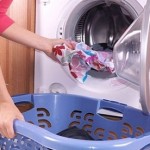Today, a washing machine is considered the most essential household appliance in the home that any housewife needs. Among other household appliances, a washing machine is perceived as the most used household item. It performs its functions efficiently: it washes, caresses and wringes out clean linen. However, situations often arise when the washing machine stops spinning the laundry or does it very badly. Where should you start looking for the causes of this breakdown?
Reasons for poor spinning of the washing machine
There are many reasons why the washing machine won't spin the laundry. Serious reasons are possible, such as breakage of units and parts, or more typical reasons, such as a malfunction of the heating element, excessive accumulation of scale on the surface of the metal cylinder, physical wear of the drum, and others.
Among all malfunctions, specialists identify the most common causes:
- the drive motor winding is defective;
- the electronic unit of the washing machine, equipped with complex control programs, does not work;
- the engine brushes are worn out, causing a loose touch from the engine armature, and it is not able to accelerate the drum to maximum revolutions;
- faulty water level sensor;
- the drain pump does not work.
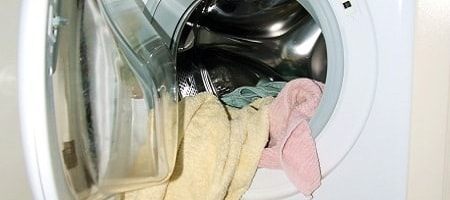
If these reasons are not confirmed, and the machine is working properly, but still does not wring out the laundry, you should pay attention to the weight of the loaded clothes. Modern automatic washing machines are highly sensitive and equipped with complex electronic modules. As soon as a specific program crashes, all processes are automatically blocked. For example, if the sensors have detected a significant excess of the loaded laundry, then the spin process is blocked.
![]() See also - Replacing the drain hose in the washing machine with your own hands
See also - Replacing the drain hose in the washing machine with your own hands
Incorrect loading of the machine
Washing machines react negatively to both high and low weight of clothes. The machine works in such a way that after activating the washing process, it "distributes" the load.
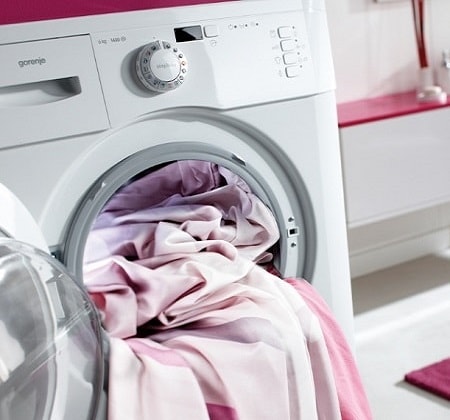
The drum rotates at a specific beat, all the loaded laundry is evenly scattered over the cylinder, distributing the weight. At the same time, water is collected. When the weight of the packed clothes is very small, or they are gathered in a pile, a special sensor reacts. Therefore, the washing machine does not wring out. These reasons trigger the automatic protection of the machine, since at maximum speed the drum will experience an unacceptable load level. But the same factor serves as the basis for turning off the machine when overloading clothes.
Broken water level sensor
If the washing machine does not squeeze out the laundry well or has stopped squeezing altogether, there is a possibility that the water level sensor may be faulty. It is he who gives a signal about the state of the water level, then the machine starts the spin mode. If this chain is broken, the washing machine cannot spin the laundry.What to do in such cases? If you have the right skills, then you canreplace the pressure switch yourself or seek the help of a qualified professional.
Defective engine
The spinning process is carried out at the maximum drum speed. But if the breakdown is in the engine, the machine will not be able to wring out. Such a malfunction can be caused by several reasons: worn out brushes on the washing machine motor , winding disturbances, etc. What should be done if the washing machine hums and stops spinning for this reason? In this case, service and deep engine diagnostics will be required. As a result, the very reason for such a malfunction and the way to eliminate it will become clear. Either repair or complete replacement of the unit will be possible.
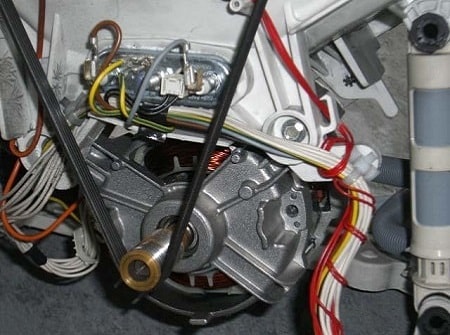
Most likely, you will not be able to cope with all the breakdowns on your own. But there are certain principles of equipment operation that will help to exclude or postpone the likelihood of such breakdowns for a long time. So what should you do?
- Before putting clothes in the drum, check for pockets. Coins, screws or other parts can cause many machine malfunctions.
- Pay close attention to the weight of the loaded laundry. You should not overload the machine, it is contraindicated to dump clothes in one lump, but it is also not recommended to wash one item at a time. The typewriter simply won't respond.
- Protect from power surges. You need to stock up on a household voltage stabilizer. A small contribution of savings will be a good investment in the long-term performance of all household appliances, given the possible instability of electricity.
If you follow the instructions for operating the equipment exactly, there will not be many unforeseen problems.
Pump malfunction
When the malfunction lies in the drain system of the machine, the waste water will simply remain in the tank. In such a situation, the washing machine will simply not be able to squeeze out the laundry. What to do in this position? When the cycle of washing and rinsing is completed, you should pay attention to whether there is a characteristic chomping. As if the technique is trying to drain unnecessary water, but it fails. In such a situation, complete replacement of a faulty pumpafter which the machine usually works properly. But before that, it is better to inspect the drainage communications for debris. The hoses may be clogged causing poor water drainage. When the hoses are in order, but the spin does not start, the pump itself should be inspected.
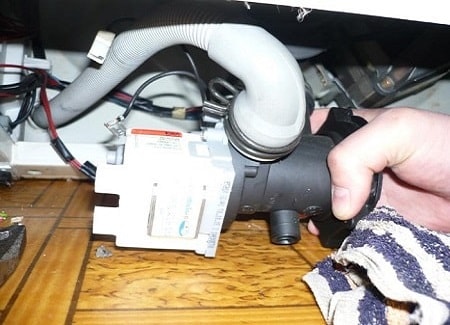
Preventive actions
The machine needs to be cleaned after every wash. This is not difficult to accomplish:
- take out the container for the powder, rinse it off the powder;
- rinse the very place of fixing the container;
- wipe dry the rubber pad from detergent residues.
When the wash is over, do not close the drum, the machine needs to dry. It is strictly forbidden to wash the machine with detergents, especially the drum.
See also:

